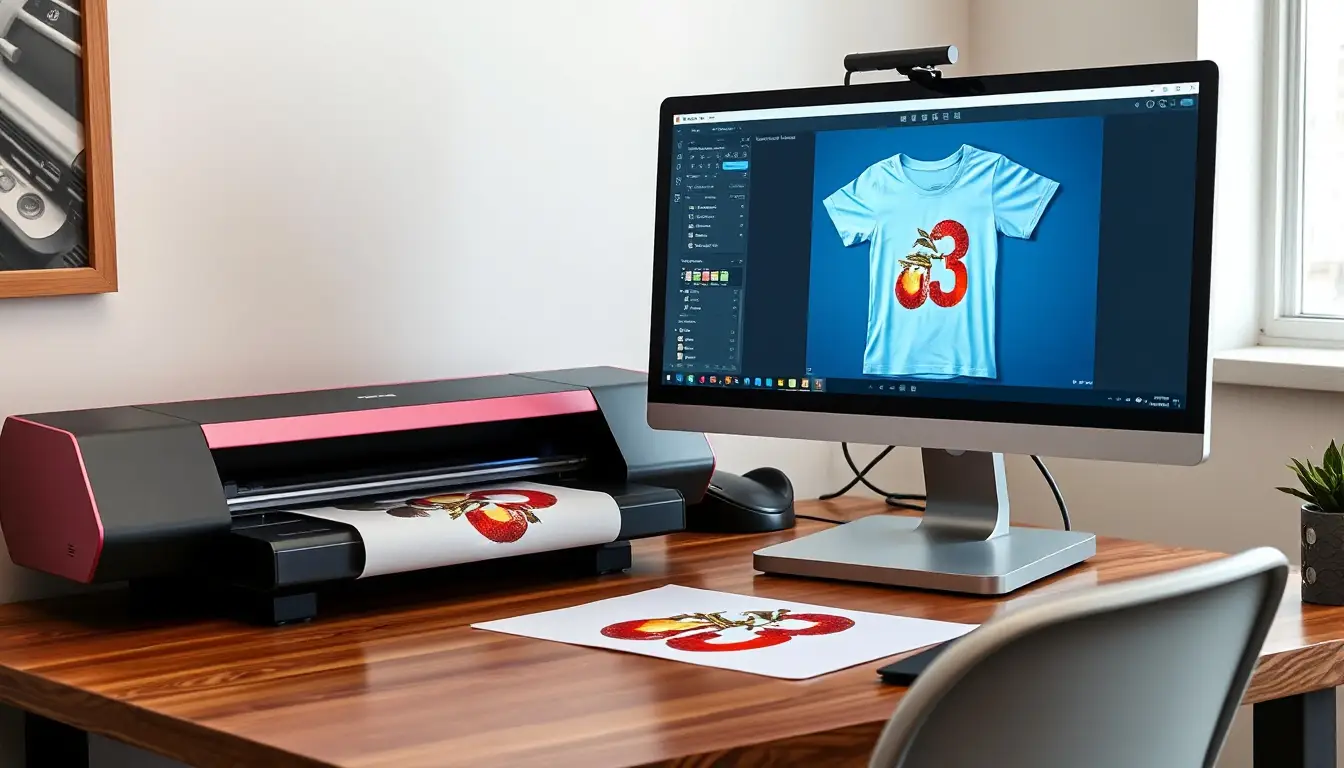Sublimation Images: How to Prepare for Perfect Results

In this step-by-step guide, you will learn how to prepare sublimation images for printing, unlocking the potential to transform everyday items into stunning, personalized treasures. Sublimation ink bonds permanently to materials, producing vibrant designs that resist fading and peeling. This beginner-friendly guide provides essential techniques and actionable tips to ensure your images are optimized for this unique printing process. With the right approach, you’ll create professional-quality prints that stand out on any substrate!



Choosing the Perfect Sublimation Image
When selecting the right image for sublimation printing, focusing on resolution and quality is essential to ensure professional results. By following these actionable steps, you can achieve sharp and vibrant prints every time.
1. Check Image Resolution
To begin, always choose images with a resolution of at least 300 DPI (dots per inch). This ensures your prints remain crisp and clear. Additionally, use photo editing software or check the image properties to confirm its DPI. Furthermore, prioritize images labeled as high resolution to avoid unexpected quality issues.
2. Avoid Low-Resolution Sources
It is equally important to avoid images from websites that typically host low-resolution content. Moreover, using low-quality sources often results in blurry or distorted prints, which can make your final product look unprofessional.
3. Consider the Final Print Size
Before selecting an image, think about the dimensions of your intended print. Enlarging a low-resolution image will lead to pixelation, diminishing the overall quality. Therefore, always choose images that are larger than your required print size. This way, you can scale down the image if needed without sacrificing clarity or detail.
By taking these steps and focusing on high-resolution images, you will ensure that your sublimation images produce vibrant and flawless results. Transitioning from preparation to printing becomes seamless when you follow these best practices, allowing your designs to truly stand out!



Preparing and Saving Sublimation Images: File Formats and Color Modes
Choosing the right file format and color mode is crucial for creating high-quality sublimation images. By following these steps, you’ll ensure your designs print with clarity and vibrant colors.
1. Select the Best File Format
- Use PNG for images requiring transparency, such as logos or designs with clear backgrounds.
- Opt for JPEG for full-color photographs or standard images. While JPEGs compress the image, they are widely supported and ideal for rich, detailed prints. Be mindful of potential quality loss with heavy compression.
2. Work in RGB Color Mode
Sublimation printers are optimized for RGB color mode, so converting any images in CMYK or other color spaces is essential. Follow these steps to adjust the color mode in your graphic design software:
- Open your image in the software.
- Navigate to the ‘Image’ or ‘Mode’ menu.
- Select ‘RGB Color’ if it isn’t already set.
3. Save the Image Correctly
Once your file format and color mode are set, save your image in the selected format. Ensure you retain high resolution and quality, making it ready for sublimation printing.
By taking these steps, you’ll optimize your sublimation images, ensuring they print with vibrant colors and sharp details on every project.
Optimizing Your Sublimation Images: Editing and Enhancements
To prepare high-quality sublimation images, editing your design carefully is essential. Follow these steps to crop, resize, and enhance your image for perfect results.
1. Import and Crop Your Image
- Begin by opening your image editing software and importing the image you plan to use.
- Use the crop tool to remove unnecessary areas, focusing on the main subject.
- Adjust the cropping tool to highlight key elements while maintaining a balanced composition.
2. Resize to Fit Your Print Area
- Resize the image to match your print area dimensions, ensuring a precise fit.
- Maintain the aspect ratio during resizing to prevent distortion.
- Use your software’s resizing options to input the exact width and height required for your design.
3. Enhance Colors and Adjust Contrast
- Make the colors vibrant by using the saturation and brightness sliders.
- Adjust the contrast levels to help your image stand out.
- Use the temperature adjustment tools to balance colors if the image appears too warm or cool.
4. Preview and Save
- Always preview your changes to compare the edited image with the original, ensuring it meets your expectations.
- Save the final version in a high-resolution format like PNG or JPEG, preserving clarity and quality for sublimation printing.
By following these steps, you’ll ensure your sublimation images are optimized for vibrant and professional-looking prints every time.
Preparing and Mirroring Sublimation Images for Printing
Properly mirroring your sublimation images is crucial to ensure your final prints are accurate and professional. Follow these steps to prepare your design for printing:
1. Load Your Image into Editing Software
- Open your preferred image editing software and import the image you plan to print.
- Navigate to the “Flip” or “Mirror” option, typically located under the Edit or Image menu.
2. Flip the Image Horizontally
- Select the “Flip Horizontal” feature to create a mirrored version of your design.
- This step is essential because sublimation printing transfers the image in reverse onto the substrate. Skipping this can result in backward prints, especially problematic for text or logos.
3. Preview and Adjust
- Preview the mirrored image to ensure all elements, including text and logos, appear correctly.
- Adjust the size and positioning of the image as needed to fit within your print area perfectly.
4. Save and Print
- Save the mirrored image in a high-resolution format to maintain quality during printing.
- Double-check your printer settings, ensuring the dimensions, quality, and paper type are correct for sublimation.
- Load sublimation paper into your printer and start the printing process.
By following these steps, you’ll ensure your sublimation images print correctly and align perfectly on your substrate, guaranteeing a polished and professional result.
Printing Your Sublimation Images
Properly preparing and printing your sublimation images is essential for achieving high-quality results. Follow these steps to ensure your design is ready for transfer.
1. Load Sublimation Paper into Your Printer
- Insert the sublimation paper into your printer with the coated side facing the correct direction for printing.
- Carefully align the paper in the tray to prevent jams or misprints.
- Avoid using regular paper, as it is not suitable for sublimation and will not produce the desired results.
2. Prepare Your Image for Printing
- Open your design software and load the mirrored version of your image.
- Mirroring the image is crucial, as sublimation transfers designs in reverse onto the substrate.
3. Optimize Your Printer Settings
- Set the paper type to “sublimation” or “fine art paper”, depending on your printer’s options.
- Adjust the print quality to high or best for maximum detail.
- Configure the color management settings to ensure vibrant, accurate colors that match your design.
4. Start the Printing Process
- Double-check all settings to confirm they are optimized for sublimation.
- Initiate the printing process and watch as your mirrored design takes shape on the sublimation paper.
By carefully following these steps, your sublimation paper will be ready with a beautifully printed design, perfectly prepared for the next stage of your project.
Final Tips for Success
In conclusion, preparing sublimation images for printing is a straightforward yet impactful process that can elevate the quality of your final product. First, focus on selecting high-quality images and using the appropriate file formats to ensure clarity and vibrancy. Additionally, effective editing and proper mirroring of your designs are essential for accurate and professional results. Furthermore, by carefully adjusting your printer settings, you optimize every aspect of your print. By following these essential steps, you’ll be well-equipped to create stunning sublimation projects that stand out. Happy printing!
Essential Supplies Needed

Sublimation Image Essentials
Mastering the Basics: A Simple Walkthrough for Your First Sublimation Print
- Familiarize Yourself with the Basics: Start by reading through the entire guide to understand the process of sublimation printing. Take notes on key terms and concepts that are new to you
- Gather Required Materials: Use the guide to compile a checklist of all necessary supplies, such as sublimation inks, compatible printer, heat press, sublimation paper, and the substrates you plan to print on
- Follow the Instructions Methodically: As you begin the printing process, follow each step in the guide carefully. Don’t rush; take your time to ensure you understand each phase, from design creation to the actual printing
- Practice with Test Prints: Utilize the guide’s tips on testing your prints. Start with smaller projects to practice your technique and troubleshoot any issues before moving on to larger or more complex designs
- Seek Help and Share Your Experiences: If you encounter challenges or have questions, refer back to the guide for troubleshooting tips or check online forums and communities for beginners to share your experiences and learn from others
- Happy printing!
Essential Tips and Techniques for a Successful Start
If you’re experiencing fading or smudging in your sublimation prints, there are several troubleshooting steps you can take to identify and resolve the issues:
- Check Ink Quality: Ensure that you’re using high-quality sublimation inks. Low-quality inks can lead to poor color vibrancy and may not adhere well to the substrate.
- Examine Transfer Paper: Use the appropriate sublimation transfer paper designed for your printer and ink. The weight and coating of the paper can affect the quality of your print.
- Adjust Printer Settings: Make sure your printer settings match the specifications for sublimation printing. This includes the resolution (higher is usually better) and the correct media type.
- Verify Temperature and Time: The heat press settings matter. Check that you are using the correct temperature and timing for the material you’re printing on. Too low a temperature or too short a time can lead to incomplete transfers, resulting in fading.
- Inspect the Substrate: The material you’re printing on must be compatible with sublimation. Ensure it is coated or made from polyester or a polymer blend, as other materials may not hold the print well.
- Clean the Print Head: If smudging occurs, it might be due to a clogged print head. Regularly clean the print head according to your printer’s instructions to maintain optimal performance.
- Watch for Dampness: Humidity can affect sublimation. Make sure your workspace is dry, as moisture can cause fading and smudging in your prints.
- Evaluate Storage Conditions: Store your inks, papers, and printed items properly. Exposure to light and heat can degrade quality over time.
- Test Different Combinations: Experiment with different settings, materials, and inks to see if you can pinpoint the cause of the issues.
By systematically addressing these factors, you should be able to troubleshoot and improve the quality of your sublimation prints. Happy printing!
Stay connected with us for more tips and inspiration on sublimation printing! Follow us on YouTube for step-by-step tutorials, project walkthroughs, and expert advice to take your creations to the next level. Don’t forget to follow us on our social media platforms for exclusive content, updates, and creative ideas. Additionally, explore our Projects Page and articles for detailed guides, material tests, and endless inspiration to fuel your crafting journey. Let’s create something amazing together!



Great tips! I love how detailed the steps are. Thanks for sharing!
This is super helpful! I always struggled with the right DPI settings.
Is there a specific file format you recommend for best results?
Can you explain more about vector images? I’m a bit confused.
This article made sublimation printing seem way less intimidating! 🎉
Wow, didn’t know color profiles matter so much! Gonna give it a try.
I wish I found this article sooner. My last print was a disaster! 😂
Do you have any recommendations for software to use for editing?